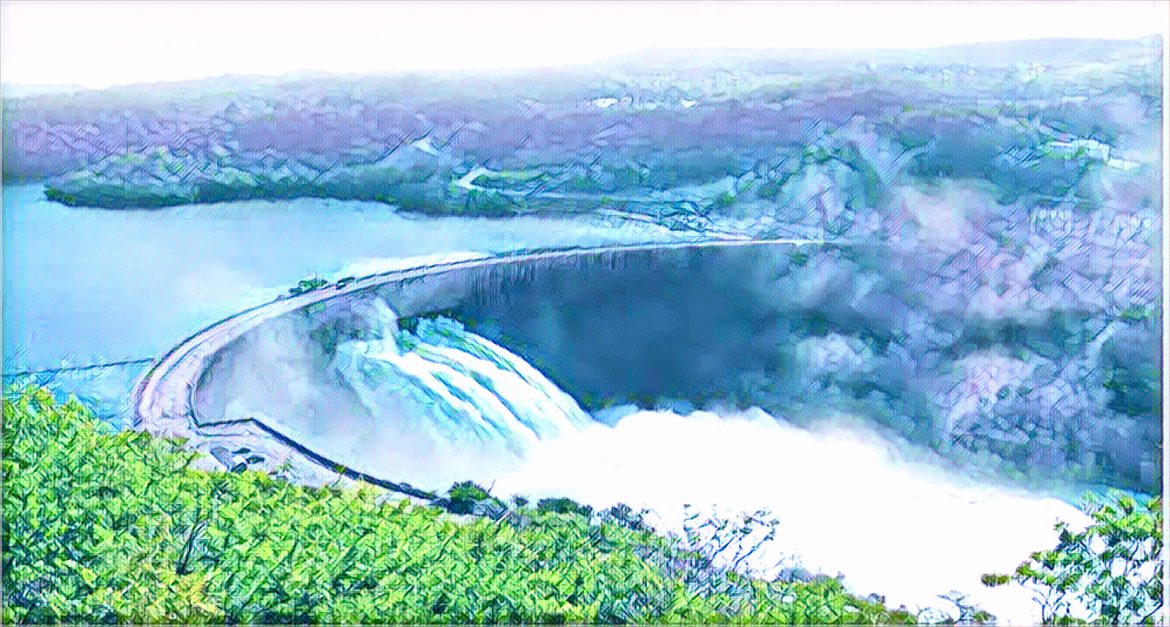Lake Kariba, the world’s largest man-made reservoir, has seen a dramatic rise in water levels this year, thanks to abundant rainfall in the Zambezi River basin. This is good news for the millions of people who depend on the lake for electricity, irrigation, and fishing.
Lake Kariba stretches across the border between Zambia and Zimbabwe, covering an area of about 5,400 square kilometers. It was created in the 1950s by damming the Zambezi River, one of Africa’s longest and most powerful rivers. The lake feeds two hydroelectric power stations, one on each side of the border, that supply electricity to both countries and export power to neighboring nations.
The lake is also a vital source of water for agriculture and wildlife, as well as a popular tourist destination. It supports a thriving fishing industry, providing livelihoods for thousands of local people. The lake is home to diverse ecosystems, including wetlands, forests, and savannas, and hosts a rich variety of flora and fauna, such as hippos, crocodiles, elephants, and birds.
However, Lake Kariba has also faced many challenges in recent years, due to climate change, population growth, and economic development. The lake has experienced severe droughts and floods, affecting its water levels and quality. In 2023, the water level dropped to a record low of 476.51 meters, threatening to shut down the power stations and plunge the region into darkness. The Zambezi River Authority (ZRA), which manages the lake, had to reduce the water allocation for the power utilities, leading to frequent blackouts and load shedding.
The low water level also had negative impacts on the environment and the people. It reduced the fish stocks, increased the salinity and acidity of the water, and exposed the shoreline to erosion and landslides. It also endangered the stability of the dam wall, which could collapse if the water level falls below 475.50 meters, unleashing a catastrophic flood downstream.
To address these challenges, the ZRA has been implementing various measures, such as repairing and upgrading the dam and the power stations, installing solar panels and wind turbines, and promoting water conservation and efficiency. The ZRA has also been monitoring the weather patterns and the water inflows from the upper Zambezi catchment, where most of the rainfall occurs.
In 2024, the situation has improved significantly, as the region received above-normal rainfall, thanks to the La Niña climate phenomenon, which brings cooler and wetter conditions to southern Africa. The lake level has risen steadily, reaching 477.87 meters by the end of January, more than double the level of the same period last year. The ZRA has increased the water allocation for the power utilities, allowing them to generate more electricity and reduce the power cuts. The higher water level has also boosted the fishing industry, improved the water quality, and restored the natural beauty of the lake.
The ZRA expects the lake level to rise further in the coming months, as the inflows from the upper Zambezi catchment reach the lake in April and May. The ZRA hopes that the lake will reach its optimal level of 488.50 meters by the end of the year, ensuring enough water for power generation and other uses for the next few years.
However, the ZRA also warns that the lake level is still below the historical average and that the future is uncertain, as climate change may bring more extreme weather events and variability. The ZRA urges the stakeholders to continue to use the water wisely and to diversify their energy sources, as the lake alone cannot meet the growing demand for electricity in the region.
Lake Kariba is a precious resource for Zambia, Zimbabwe, and beyond. It is a symbol of cooperation, innovation, and resilience. It is a source of life, power, and hope.
Source: The Herald


